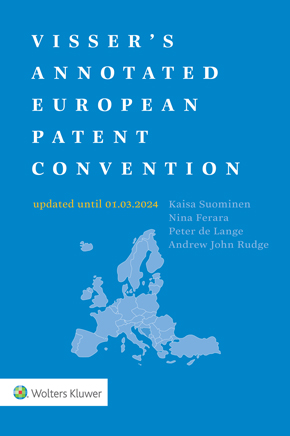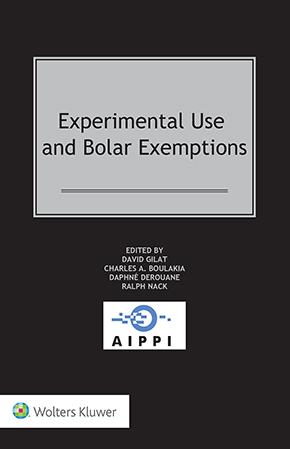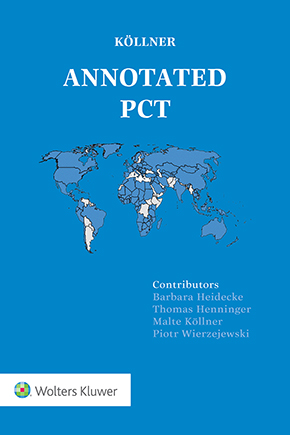Judgment Without Trial: The Erosion of Appellate Restraint in UK Patent Law
August 26, 2025
Two recent patent decisions on opposite sides of the Atlantic - EcoFactor v. Google in the United States and Optis v. Apple in the United Kingdom - highlight a growing divergence in the role of appellate courts in complex technology disputes. On their surface, both cases address similar questions of evidentiary discretion and damages methodologies. But a closer look reveals that the UK Court of Appeal has taken a path that threatens to collapse the distinction between trial and appellate adjudication. The Optis decision represents a troubling abdication of the constraints and responsibilities that define appellate review.
Diverging Appellate Remedies
Both cases involved trial courts attempting to determine a reasonable patent royalty rate. And both appeals addressed a similar evidentiary issue: a trial court's discretion to exclude expert testimony interpreting comparable license agreements.
In EcoFactor, the Federal Circuit, sitting en bane, held the district court erred by admitting EcoFactor's licensing expert testimony. The expert had relied on EcoFactor's comparable licenses to estimate a reasonable royalty, but the court found that his methodology lacked a reliable foundation. As a result, the Federal Circuit held that the district court had abused its discretion by denying Google's motion to exclude the testimony, and it ordered a new trial on damages.
In Optis, the UK Court of Appeal held that the trial judge erroneously rejected both sides' expert analysis of comparable licenses. But instead of remanding for a new trial, the appellate court adopted the role of fact finder and replaced the $50 million royalty set by the trial court with a $500 million award after conducting its own de novo rate setting.
Who Finds the Facts
The contrast between approaches of the two courts is more than just a difference in appellate remedies. Appellate review is to police legal error and to ensure that trial courts have acted within the bounds of reason. It is not to replace the function of trial courts when they see fit.
Trial courts are uniquely equipped to conduct fact-finding. They hear live testimony, manage complex evidentiary disputes, and assess credibility in real time. Fact witness testimony, crossexamination, expert rebuttal, and contextual nuance all shape the outcome. Appellate courts, by contrast, encounter these records filtered through written briefs, excerpts and oral arguments. Appellate courts are not meant to rerun the trial - they are not presented with the testimony necessary to make a reliable first-instance factual determination.
The Federal Circuit's decision in EcoFactor fits into the bounds of the role of an appellate decision. After concluding the expert's opinion should have been excluded, the circuit made no attempt to substitute its own judgment on appropriate rate and remanded the case for a new trial on damages.
The Optis court, however, ventured outside its core competence. After finding the trial judge's methodology was flawed, it performed its own de nova calculation instead of remanding. By undertaking its own royalty determination without the benefit of a trial, the Optis deprived the parties of the fact-finding process necessity to ensure a fair outcome.
Moreover, that an appellate court cannot merely substitute its judgement for the trial court’s judgement was confirmed in a recent trademark case decided by the UK Supreme Court (UKSC), i.e. Iconix Luxembourg Holdings SARL (Respondent) v Dream Pairs Europe Inc and another (Appellants) [2025] UKSC 25. At para 94 of that judgment the UKSC noted that “[w]hile of course the decision of an appellate court trumps that of the court below, the law has imposed structured constraints designed to prevent a free for all in a higher court whenever a party (with the necessary resources) wishes to challenge the first instance decision of the trial judge”. The UKSC also cited an earlier decision by Lewison LJ in Fage UK Ltd v Chobani UK Ltd [2014] EWCA Civ 5, where the judge interestingly reminded that “(ii) The trial is not a dress rehearsal. It is the first and last night of the show. (iii) Duplication of the trial judge’s role on appeal is a disproportionate use of the limited resources of an appellate court. (iii) In making his decisions the trial judge will have regard to the whole of the sea of evidence presented to him, whereas an appellate court will only be island hopping” (para 114).
Creating a Procedural Void
When appellate courts assume trial functions, they disrupt the layered structure of judicial review. Both the US and UK judiciaries are designed around graduated scrutiny: trial courts serve as primary factfinders, intermediate appellate courts review for errors in the first instance, and supreme courts are given the discretion to intervene on matters of systemic legal significance.
The legitimacy of discretionary supreme court review hinges on a crucial tradeoff: it can focus on matters of systemic importance because intermediate appellate courts provide a mandatory review of trial court determinations. This tradeoff means that supreme courts are not expected to sift through factual minutiae, and they are under no duty to review for any errors in judgment. This allows them to reserve their judgment for matters of general public importance.
But this compromise collapses when an intermediate court sidesteps its reviewing function to act as a first-instance decision-maker. If a trial court were to make an obvious error that has a material effect on the outcome, an appellate court would be obligated to correct it. However, if the appellate court itself makes the same erroneous finding, the impacted party has no institution to turn to for non-discretionary review. The result is a procedural void.
By ruling on the admissibility of expert testimony, the EcoFactor court provided an appropriately narrow ruling that a party could petition for discretionary review. The Supreme Court would not be asked to re-weigh the underlying licenses or sales data; its role would only be to consider whether it should hear a challenge to the standard for admissibility adopted by the Federal Circuit.
Conversely, the Optis approach hollows out intermediate review, placing the UK Supreme Court in a procedural conundrum. By making a first-instance factual determination, the Court of Appeal presents the high court with a binding judgment that has never faced a proper trial. To decline review would undermine the procedural foundations that justify discretionary jurisdiction. But to engage in such a review would redefine the Supreme Court’s role, requiring it to interpret the Court of Appeal’s detailed rate methodology and calculations rather than rule on a clean question of general public importance.
Conclusion
While the Federal Circuit's EcoFactor decision exemplifies the traditional role of appellate review, the Optis decision erodes it. Without intervention from the UK Supreme Court, this precedent leaves the Court with a choice: either scrutinize the factual minutiae of decisions coming from the Court of Appeal or accept a new status quo where appellate review can produce first instance findings - without the benefits of an actual trial - subject only to discretionary review.
You may also like














